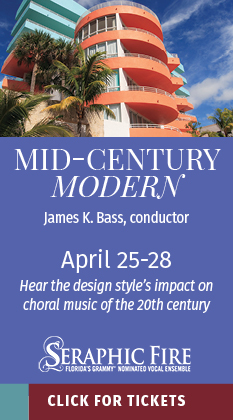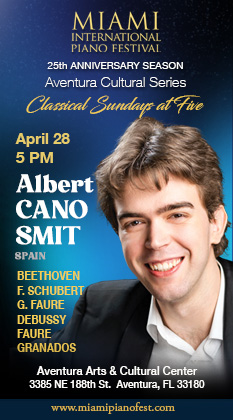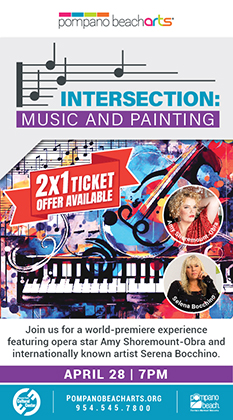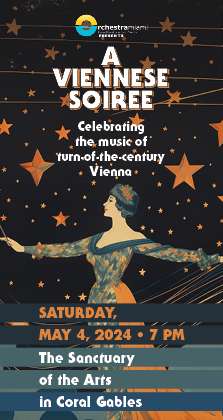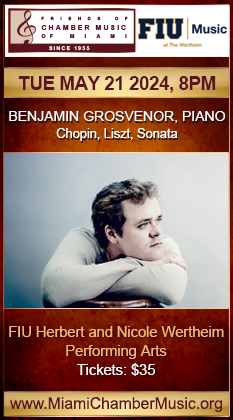Violinist Gluzman provides spark to mixed American program

It proved a bit of serendipitous scheduling that in the wake of this past week’s historic election, the New World Symphony offered a program of three American works that, while varied in style, share a strain of indigenous homegrown lyricism.
“More corn than gold,” was one critic’s dismissive take on Erich Wolfgang Korngold’s Violin Concerto, shortly after its 1947 premiere. Though written for Bronislaw Huberman, it was Jascha Heifetz who gave the first performance in St. Louis, and the legendary violinist’s astounding recording remains the, well, gold standard, more than a half-century later.
Korngold’s concerto may not be the most profound work in its genre ever written — or the most original, for that matter, with the composer mining several of his Warner Brothers film scores for thematic material. But it is an undeniably effective showpiece with soaring heart-on-sleeve melody allied to barn-burning solo fireworks and Korngold’s brilliant whipcrack orchestration.
Vadim Gluzman is clearly a soloist steeped in the romantic tradition, and his febrile vibrato — aided by the remarkable burnished tone of his “Ex-Leopold Auer” Stradivarius — seems tailor-made for Korngold’s richly upholstered melodies. Yet the Israeli violinist leavened the sucrose deftly with his bristling passagework, biting accents and tightly coiled cadenza. While sensitively played by Gluzman, cohesion suffered somewhat in the Romanza, with Neale’s accompaniment getting detached from his soloist’s very free rubato.
It’s a testament to the ludicrous complexities embedded in the final movement that even an assured technician like Gluzman had some brief, precarious moments. Mostly the soloist blazed through the technical landmines, with exhilarating panache, though the full-reverse coda would have benefited from greater rehearsal time.
The Korngold was preceded by a new-ish work, Hymn to the Sun by Kevin Puts. Neale is a committed advocate of this young composer, having directed a performance of a Puts symphony with the New World a few seasons back.
Premiered this past August in Idaho by Neale and the Sun Valley Symphony to mark the opening of its new music pavilion, the work is inspired by Akhnaton’s eponymous hymn and scored for large orchestra including brass and four-man percussion battery. Hymn to the Sun opens with unorthodox tuning that suggests a primitive ritual, followed by a pinch of jazzy echt-Bernstein and some attractive writing for divided strings representing the sun’s ascent.
Yet, as with other Puts works, Hymn to the Sun tends to play a bit too earnestly to the cheap seats, a superficial neo-Romanticism alternating with Jerry Bruckheimer-like bombast that feels souped up even for a ceremonial commission. Still, Neale and the New World gave this second performance of Hymn to the Sun gleaming advocacy deserving of a masterpiece.
In his self-effacing introductory remarks, Puts apologized to the musicians for the extensive revisions he made to the piece during rehearsals this week. That helps to explain the rough-hewn, under-prepared performance of Aaron Copland’s Symphony No. 3 that followed after intermission.
When Copland’s Third Symphony was premiered in 1946, the nation has just emerged from the long shadow of World War II and the feelings of relief, resolve and hard-won optimism are clearly reflected in the gaunt, craggy grandeur of this score. Sections of the symphony can sound rhetorical, but there’s a toughness in this music—particularly, the vigorous scherzo— as well as a wistful sadness and darkness that balance the grandly public pages.
Saturday’s performance had its moments with a majestic Fanfare for the Common Man and the massive affirmation of the final bars rock-like and implacable, the sonic equivalent of an architectural monument on the D.C. mall.
Yet for too much of this performance, conductor Neale seemed content to skim the score’s surface, with little dynamic detailing or expressive nuance. The Scherzo’s shifting metres are famously difficult, but the direction was decidedly slack, with balances muddled and rhythms chaotic. The reading did little to plumb the Andantino’s introspective heart, with the flutes’ matter-of-fact stealing in of the fanfare theme completely lacking moment.
Without attentive expressive detailing, Copland’s Third can morph into sounding like a second-rate tub-thumper and, for long stretches that was the case Saturday night. Technically, the playing was too often below what these musicians are capable of, with sour wind tuning, and maladroit violin and horn solos.
The program will be repeated 3 p.m. Sunday at the Lincoln Theatre, 541 Lincoln Road, Miami Beach. $27-$63. 305-673-3331. www.nws.edu.
Posted in Performances
Leave a Comment
Sun Nov 9, 2008
at 12:21 pm
No Comments
